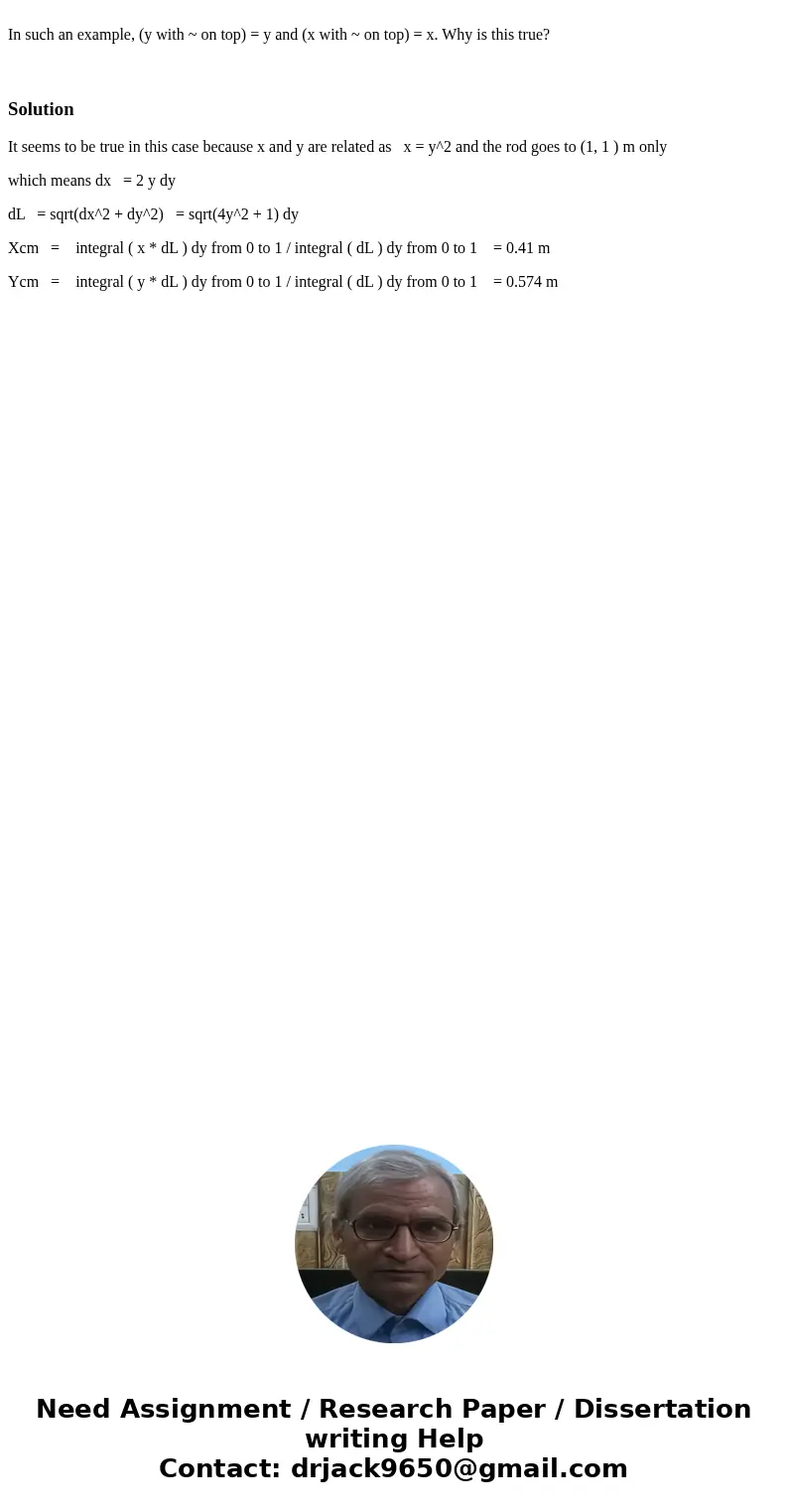In such an example y with on top y and x with on top x W
In such an example, (y with ~ on top) = y and (x with ~ on top) = x. Why is this true?
Solution
It seems to be true in this case because x and y are related as x = y^2 and the rod goes to (1, 1 ) m only
which means dx = 2 y dy
dL = sqrt(dx^2 + dy^2) = sqrt(4y^2 + 1) dy
Xcm = integral ( x * dL ) dy from 0 to 1 / integral ( dL ) dy from 0 to 1 = 0.41 m
Ycm = integral ( y * dL ) dy from 0 to 1 / integral ( dL ) dy from 0 to 1 = 0.574 m

 Homework Sourse
Homework Sourse